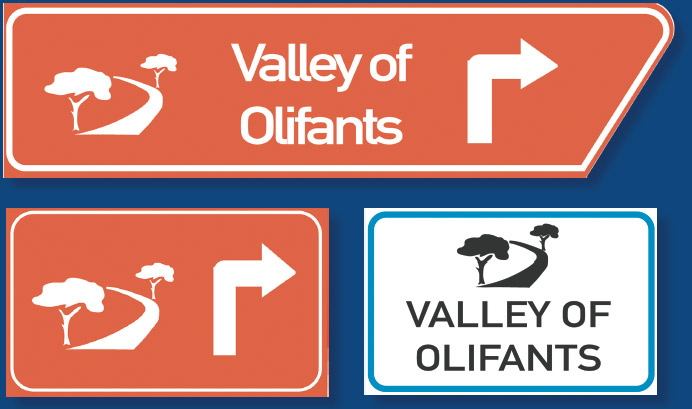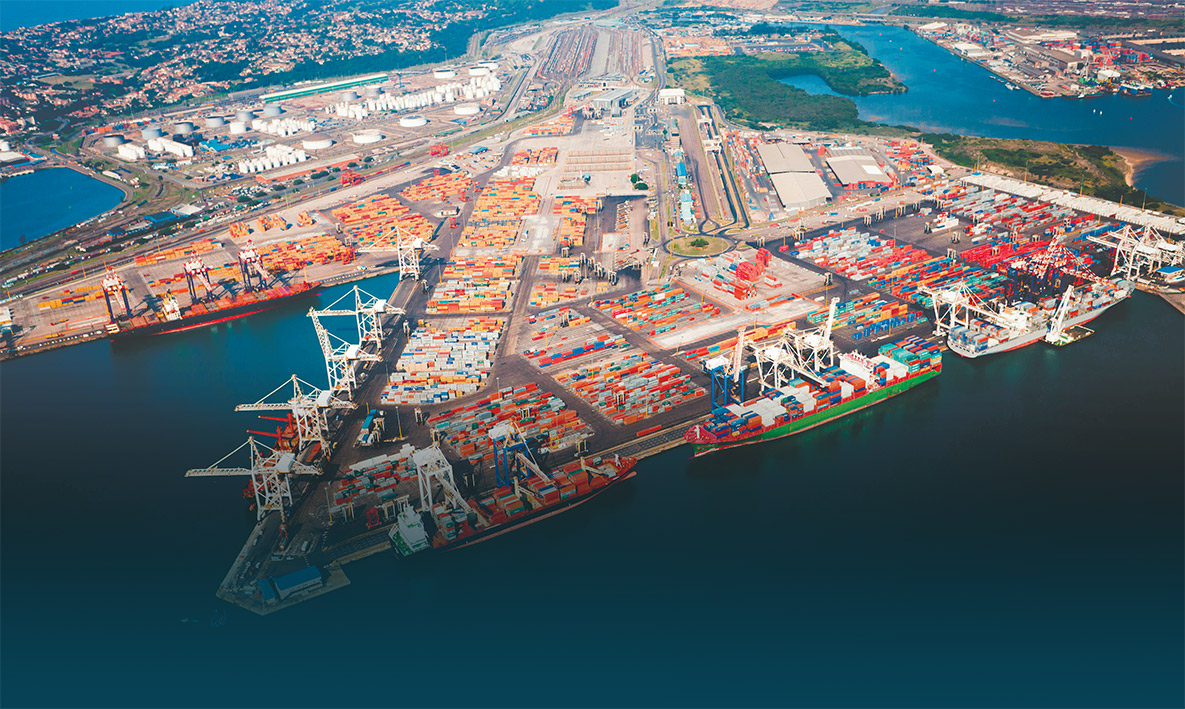
New signage for scenic route
If you see this sign, you’ll know that you’re on the Valley of the Olifants route, a newly recognised scenic route in the eastern Lowveld and the unique escarpment area of Limpopo. It consists of the R71 and its connecting roads. The area is known for its abundance of wildlife, craggy mountains, natural and manmade forests, trout streams, waterfalls and rich culture. It takes in the Wolkberg, Haenertsburg, Georges Valley, Magoebaskloof, Tzaneen, Modjajiskloof, Phalaborwa, Mica, Hoedspruit, Blyde River, Northern Drakensberg and the Strydom Tunnel. The name of the route comes from the valley that cradles the Olifants River, once known for its abundance of elephants. SANRAL has undertaken to upgrade its signage along this route, as well so as to enhance tourism in the area.

How important are roads? Road infrastructure plays an important role in our lives as individuals and communities. It connects people with people and business to business. It helps to speed up the transportation of goods and people from one point to another. It is the backbone of our economic activities and by building more roads and maintaining our existing roads, we keep the economy running smoothly.
Is the upgrade of the N3 necessary? I welcome the upgrade of the N3 between Durban and Pietermaritzburg, because it carries a large volume of goods and people. It is a busy route and not only connects us with our neighbouring major city, Johannesburg, but also with other provinces. As Durban is the city with the busiest port and biggest container
harbour, the N3 is an important corridor, because it enables us to have smooth trade. We welcome the improvement and upgrades, as they are a clear demonstration of our government’s commitment to deliver strategic infrastructure that will transform our economy, create jobs and stimulate further opportunities for growth.
What are some of the problems with the current N3? In its present state, the N3 cannot cope with the high volume of heavy vehicles. Also, the topography of certain sections of the route contributes to bottlenecks and crashes. The closure of the N3 causes major economic losses for businesses. We are hoping that this project will be completed on time. Working with the provincial government, the Minister
of Transport and SANRAL, we hope to have this project completed with minimal delay. We remain optimistic that any challenges affecting the project will be resolved and that it moves with speed.
Would this upgrade improve the economy? When people and goods move at the required pace, we will be able to facilitate trading services and ensure that we deliver on time. There will be more opportunities in terms of trade, transport, tourism and business activities in general.
How do you feel about the upliftment of local labour/SMMEs on the project? We at eThekwini Municipality have adopted a framework that seeks to transform our local space for the socioeconomic development of
our people. Our approach is and has always been that locals should benefit in terms of job opportunities. Community-based businesses, as well as formal and informal traders must also benefit. Although this is a national project, communities living close to the project should be afforded the opportunity to own it through employment and subcontracting.
What is the role of the private sector
in making the most of this project?
The partnership between the
government and private sector is
a strength. When we work well
together, we create more opportunities
to fight poverty, inequality and
unemployment.
The private sector must
ensure that it performs and produces
good-quality work that matches
industry standards. It must also ensure
that there is a transfer of skills and
empowerment.

